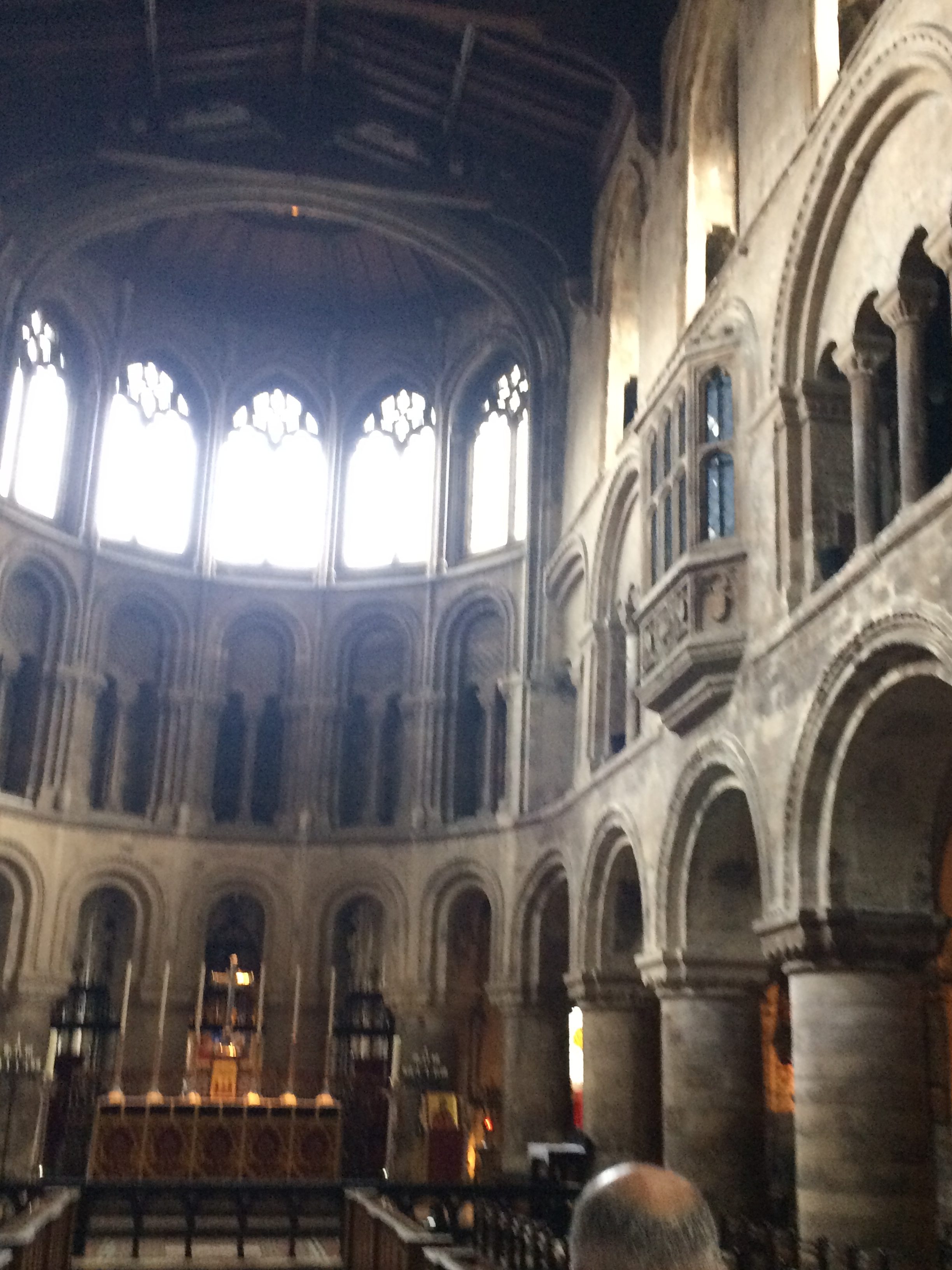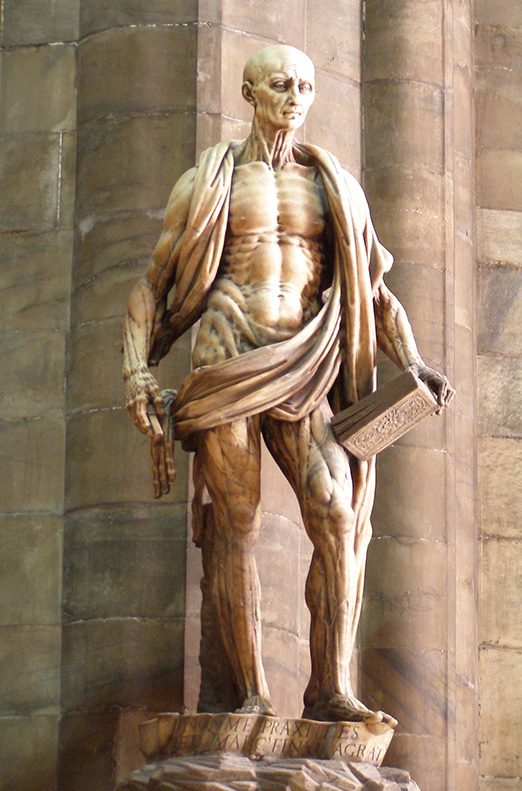
A view of the church of St. Bartholomew the Great which I was able to visit during my visit to London last week.

Statue of Saint Bartholomew, with his own skin, by Marco d’Agrate, 1562 on the wall of the cathedral of Milan.
Along with his fellow apostle Jude “Thaddeus”, Bartholomew is reputed to have brought Christianity to Armenia in the 1st century. Thus, both saints are considered the patron saints of the Armenian Apostolic Church. Tradition has it that Apostle Bartholomew was executed by being flayed alive and beheaded in Armenia.
The account of Bartholomew being skinned alive is the most represented in works of art, and consequently Bartholomew is often shown with a large knife, holding his own skin, or both (as in Michelangelo’s Last Judgment). In Avezzano, in Abruzzo the image of the Saint who is holding his own skin has become the symbol of the city. Archaeological research has shown that the cult of Saint Bartholomew began in Avezzano, because the previous presence of a temple dedicated to Heracles, which is always represented in the act of holding the skin of the Nemean lion. Bartholomew is also the patron saint of tanners.
St. Bartholomew is also associated with the massacre committed on his feast day. The St. Bartholomew Day Massacre began in the night of 23–24 August 1572 (the eve of the feast of Bartholomew the Apostle), two days after the attempted assassination of Admiral Gaspard de Coligny, the military and political leader of the Huguenots (French Protestants). The king ordered the killing of a group of Huguenot leaders, including Coligny, and the slaughter spread throughout Paris. Lasting several weeks, the massacre expanded outward to other urban centres and the countryside. Modern estimates for the number of dead across France vary widely, from 5,000 to 30,000.
